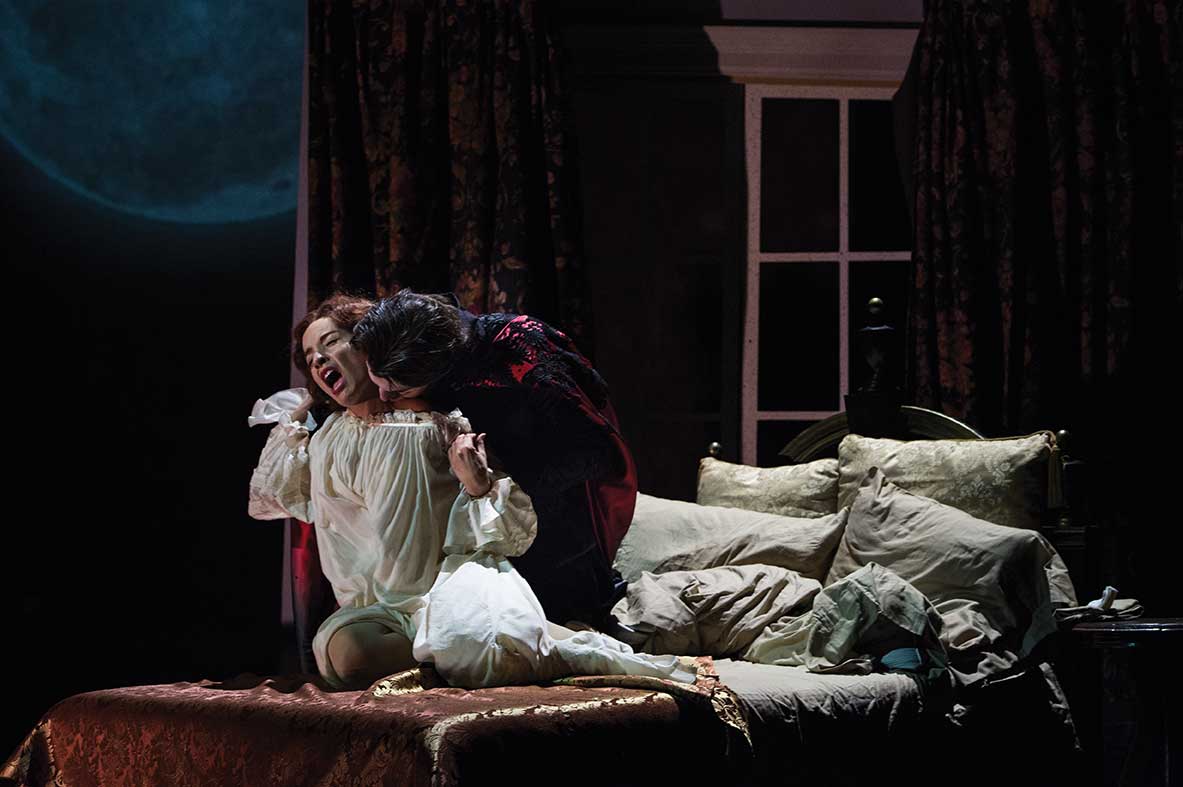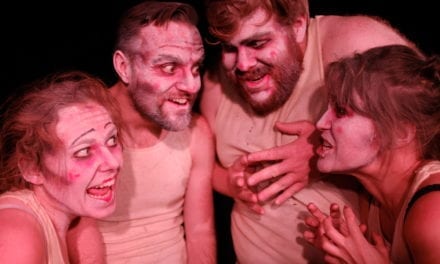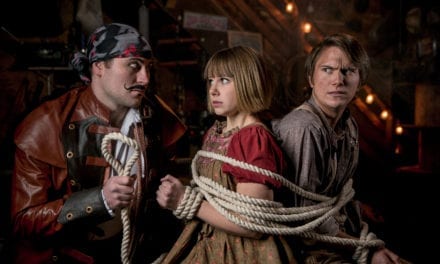CEDAR CITY — With a lunar eclipse turning the moon red and October nearly upon us, it is the perfect time for theatre companies to produce plays that spook and scare audiences. Not wanting to miss out on this annual Utah theatrical tradition, the Utah Shakespeare Festival has mounted a production of Dracula.

Tyler Pierce as Dracula in the Utah Shakespeare Festival’s 2015 production of Dracula. (Photo by Karl Hugh. Copyright Utah Shakespeare Festival 2015.)
In this adaptation of Bram Stoker‘s classic novel, Count Dracula is an undead vampire who comes to London in pursuit of new victims. His primary targets are Lucy and Mina, who are romantically involved with Dr. John Seward and Jonathan Harker, respectively. Once the villainy of Dracula becomes clear, these Londoners team with vampire expert Professor Van Helsing to put a stop to the count’s rampage.
The strength of the production is director Jesse Berger’s ability to create creepy moments that establish the Gothic mood of the play. Early on, Berger capitalizes on the aspects of the script that exist in reality (such as sleepwalking and insanity) to create an unsettling atmosphere. This made the later introduction of the explicitly supernatural material seem like a logical development. Berger also cultivated a Victorian formality among the couples in London, which made the chaos and disorder of their behavior in response to Dracula more tragic.

Jamie Ann Romero (left) as Lucy and Tyler Pierce as Dracula in the Utah Shakespeare Festival’s 2015 production of Dracula. (Photo by Karl Hugh. Copyright Utah Shakespeare Festival 2015.)
The biggest problem with this production is Steven Dietz‘s script, which lacks the needed coherence to connect the more spooky moments to one another. Every story has rules that govern the world of the play, and in a fantasy it is particularly important that those rules are clearly established. Unfortunately, Dietz never clearly establishes these rules. As a result, garlic wards off vampires, except when it doesn’t. Dracula feasts upon the blood of the living, except when he decides not to.
Leading the audience (and the other characters) through this mess is John G. Preston in the role of Van Helsing. Preston’s character is a Dutch professor who is an expert on vampires, which means that every time Dracula does something unexpected, Preston has the burden of unpacking some exposition that the character never bothered explaining to the other characters. As a result, it feels like Dietz is making the story up as he goes along.

Chris Mixon (left) as Renfield, John G. Preston as Van Helsing, and John Maltese as Seward in the Utah Shakespeare Festival’s 2015 production of Dracula. (Photo by Karl Hugh. Copyright Utah Shakespeare Festival 2015.)
Really, it is remarkable that Preston and the cast can make the script work as well as they do. Much of Preston’s dialogue is incoherent Victorian mystical claptrap, but his earnest delivery serves the script well—especially in the second act. Likewise, John Maltese creates a superb performance as the brilliant young Dr. John Seward. Maltese’s character has the most interesting development over the course of the play, as Seward loses confidence in himself as he is forced to deal with supernatural events that his scientific training did not prepare him for. This is most apparent when he has to give his fiancée, Lucy (played by Jamie Ann Romero) a blood transfusion.
The best standout among the cast, though, is Chris Mixon as Renfield, a mortal servant of Dracula who is insane and locked up in an asylum. Mixon never lets up with the crazed, wide-eyed mannerisms of his character, and the result is far more unsettling than many of the special effects designed to spook the audience.

Jamie Ann Romero (left) as Lucy and Tyler Pierce as Dracula in the Utah Shakespeare Festival’s 2015 production of Dracula. (Photo by Karl Hugh. Copyright Utah Shakespeare Festival 2015.)
As the title character, Tyler Pierce has a hint of sensuality, which becomes especially disconcerting when mixed with Dracula’s evil. Nowhere is this mix more effective than when Dracula attacks Lucy and sucks her blood. Unfortunately, Pierce was given staid dialogue (such as refering to meetings with Leonardo da Vinci or Atilla the Hun) that are more opaque than mysterious. As a result, this Dracula is nothing more than a caricature, despite Pierce’s best efforts.
Brad Berridge’s sound design was the director’s biggest aid to casting a somber pall over Dracula. The disquieting echoes, sudden screams, and other odd aspects of Berridge’s work were sometimes disturbing, yet clearly appropriate for the play. On the other hand, Bill Forrester‘s set design was less successful. The sharp lines and skewed angles contributed to the unnatural mood of the play. But some set pieces had flaws that I could not ignore. One was the staircase in Dracula’s castle, which had a large candelabra that was so rickety that its movement distracted me from everything the actors were saying. Another was the safe room in the asylum, which Dracula would enter through a coffin that rose from the stage floor. It was never clear whether Dracula was literally entering from the floor or if these entrances were symbolic in some way.
Generally, this production of Dracula is punctuated with the type of moments that audiences want in a Halloween play. But between those spine-chilling instances are long, talky scenes which disappoint more often than not. Dracula is not a total misfire, but the play’s flaccid, lifeless script is too much of an impediment for the beleaguered cast to overcome.




